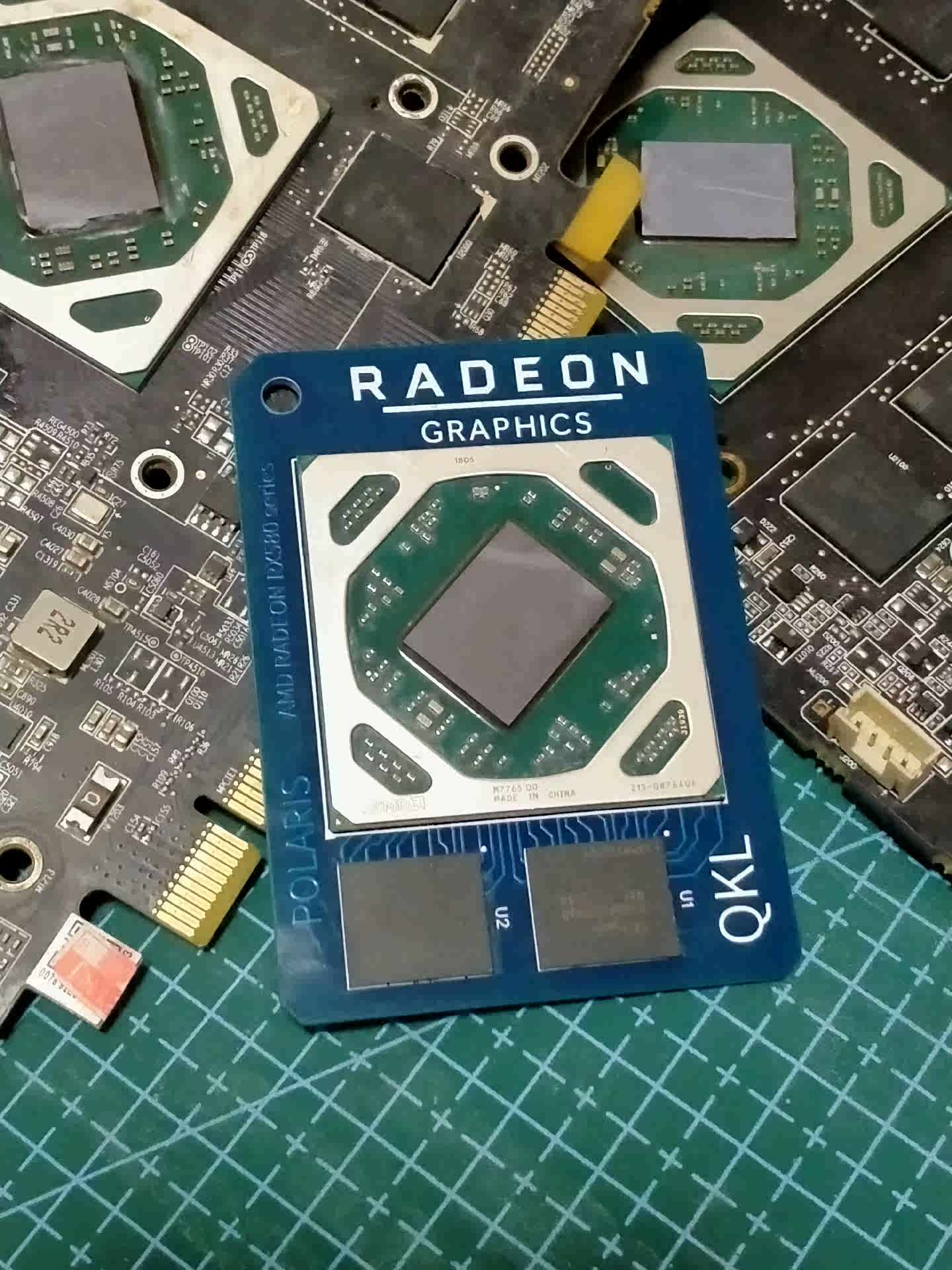
A Chinese computer shop, discovered by @Olrak29 apparently had plenty of malfunctioning Polaris based AMD Radeon RX 500-series graphics cards in its possession and decided to make keychains from them. The keychains — which retail for ~$5 — look a little too large for a pocket, but they will hang hang great in your office or from your gaming rig. If used as a keychain, their size is almost a guarantee that your keys will not get lost.
It is hard to tell how these keychains are made. It certainly looks like they are cut out from a graphics card, then processed to remove metallic parts, painted, and marked with the AMD Radeon RX 500 Series logotype. Yet, it is entirely possible that the GPU and memory are removed from a broken graphics card, then glued to a PCB that already carries the Radeon RX 500 Series ornament.



Launched in Q2 2016, AMD's Polaris microarchitecture represents the 4th iteration of the company's GCN architecture introduced in late 2011. Polaris GPUs were never meant to be AMD's offerings that would compete against Nvidia's top-of-the-range gaming solutions (e.g., the GeForce GTX 1080 or GTX 1080 Ti), but were aimed at high-volume mass market.
With MSRPs ranging from $109 to $239 per graphics card, these GPUs were instrumental to increase AMD's discrete desktop GPU sales from 8.88 million units in 2015 to 13.49 million units in 2016 and 15.89 million units in 2015, according to data from Jon Peddie Research. Hence, while they hardly were the best graphics boards of their time, they were certainly among the best graphics cards at their price points.
By now, AMD's Polaris GPUs and Radeon RX 400 and RX 500-series graphics cards are morally outdated and are good enough for office PCs in the best case scenario. Meanwhile, they are plenty of malfunction graphics cards made in 2016 – 2017. That said, we are not surprised to see that some of those GPUs and boards are turned into keychains.







